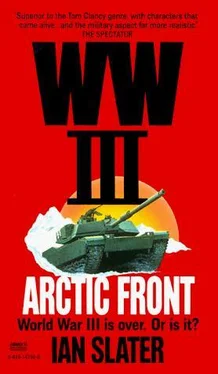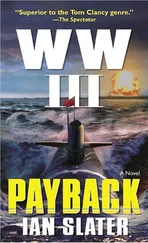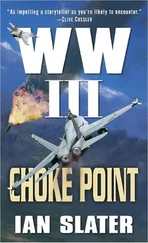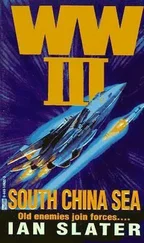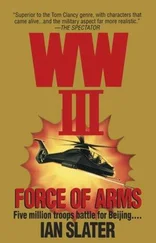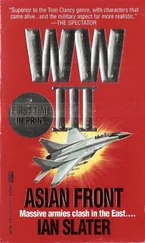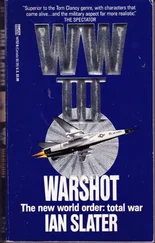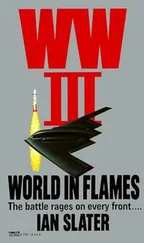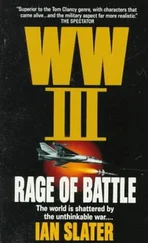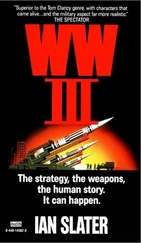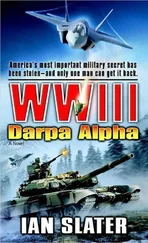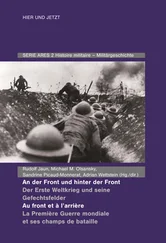At twenty-three feet above the ground the cloud detonators ignited the now lethal explosive/air mix, wind gusts having pushed it sharply westward. The vast “in-curling” flame, over two hundred yards long and over a hundred yards wide, immediately killed over forty of the fifty-six SAS.
It was not the FAE’s ferocious heat or terrible overpressure or the detonation of all the mines in the area in one cataclysmic upwelling of black, rock-streaked snow that killed the SAS commandos, but asphyxiation. The flames instantly consumed all oxygen in the area, and in the process sucked every last bit of air from the trapped men’s lungs. Over seventy-three SPETS suffered the same fate, the heat and shock wave felt through the canopy of the following Tomcat that, dropping its Big Blue, killed another eleven SAS troopers, leaving only sixteen scattered further inland and several, like Brentwood and Aussie, to the south.
The second FAE did not kill any more SPETS but flooded ventilator shafts with fire, so that now more than a thousand SPETS were assembling beneath the Rl shaft. Their imminent exit was due not only to the befouled ventilation system but to their desire to combat the troops that were certain to be aboard the more than one hundred specks now showing up on Ratmanov radar — Apache gunships preceding a larger armada of over 15 °Chinook CH-47 troop transport choppers. Dracheev was in a rage; not only had this Freeman had the courage to call in FAEs near his own men, so destroying SPETS minefields, but had used the FAEs to clear landing space for a helicopter assault. Well, it wasn’t over yet.
* * *
“Flames still visible,” reported the Starlifter’s copilot.
“Okay,” acknowledged the pilot. “We go around again. Tell Freeman.”
“Roger.” There was an explosion at two o’clock high — either a Fulcrum or an Eagle, it was impossible to tell.
* * *
The next time around the flames had abated, partially because of the snow and the arrival of a bevy of rain-heavy squalls coming in over the pressure ridges in excess of a hundred miles an hour. Freeman was first out, diving toward the now-blackened drop zone. The rest of the Delta stick came behind him, hoping that the squalls would pass well over the island; otherwise they’d have one hell of a job steering into the cleared area. Two Delta men were already dead, one sucked into the starboard engine of a MiG-29 going down, the other man struck seconds later by the same plane’s canopy, his skull crumpling the cockpit’s Perspex, momentarily turning it cherry red before the froth of brain was consumed by the blizzard. Another MiG-29, having broken radar silence in the final moments of his attack, and frustrated by not having found the big Starlifter, glimpsed the unmistakable wing sweep of a Tomcat. But the Tomcat vanished before he could fire an Alamo or Apex.
Freeman was pulling hard, lowering the left toggle, going into a spiral. The drop point he had picked up in the eerie blue of civil twilight held three charred bodies — SAS or SPETS he didn’t know, but at least it would be clear of mines. There were several bright orange flashes a mile or so east of the cliffs and then a roll of explosions echoing off the cliff face: three Chinook choppers hit by Rat AA fire.
Freeman’s landing was softer than he’d braced for. His right foot passed through the black crackle of one of the corpses. The only solids left by the blaze were bone, ammunition clips — their rounds set off by the fire — a partially melted Kevlar helmet that told him it had been a Special Air Service trooper, and a Heckler and Koch submachine gun nearby. The air was pungent with the sickening-sweet odor of burnt flesh. Freeman saw his equipment pack in a black, oily pool where SAS and others — he guessed SPETS — lay charred beyond recognition, one tightly stretched, leatherlike face staring eyeless at the sky.
Already Freeman was under fire, the pyrotechnics of intercutting red and white tracer against the Prussian blue of a now spectacularly clear Arctic morning mixing with orange streaks from the marine expeditionary unit’s assault Apache as 2.75-inch-diameter rockets, fired in salvos, exploded against the high, dug-in cliff guns, followed by the skittering orange/red detonations of the ninety-five-pound anti-radar Hellfire missiles. In the distance writhing, smoking, umbilical trails of red-hot spent casings spun down from the Apaches’ 750-round-a-minute, belly-mounted Hughes gun, adding to the deadly kaleidoscope of colors passing through and blending with one another against the vast bluish-white tumble of the ice-bound strait — the thin squiggle of Siberia’s mountainous coast just visible twenty-five miles westward.
The CBN reporter on the southern tip of the island, two miles south of where the FAEs had scoured out a safe landing zone for Delta Force, was on a high, getting pics now as well as the clearest sound bites he’d ever heard, better than anything he’d gotten in the Iraqi war.
A wounded SPETS snapped off a burst in Freeman and Morgan’s direction. Having shucked his chute, Freeman instinctively went on his belly, reaching in the black ashes of one of the corpses for the dead man’s MP5K. The gun fired, and the SPETS rolled into Morgan’s burst, shuddered, and lay dead even before the white flecks of his overlay, torn out by the nine-millimeter Parabellum, had fallen to the ground.
Freeman, the MP5K cradled in his elbows, began a fast belly crawl toward his pack ten yards in front of him when he saw two SPETS, one hauling a light machine gun, its bipod swinging, momentarily silhouetted against the azure sky at the cliffs edge, the latter’s sharp black thrust of rock clearly visible now the snow had been melted by the FAE’s explosion. Freeman fired again; now Morgan was close in beside him.
The SPETS made it across the gap in the rock, splinters of basalt flying high, catching the sun. Freeman patted the MP5K he’d dug out from the ashes. “By God those Krauts make ‘em good, Harry.” But now the gun’s magazine, he knew, was nearly empty, and only a yard or two from the pack he used the tether line to bump it over a pile of shale, tearing out the Winchester 1200. Knowing he had the lead slug in the spout, he told Morgan to lead. The submachine gun was better able to sweep the SPETS’ position than Freeman’s lead slug, which was intended for steel doors and the like. The Delta major clipped in a new mag.
Having seen the Delta Force landing, Brentwood and Aussie and two other SAS had intended to join them, but with a sprawling half mile of snow, no doubt mined, between them and the Delta drop zone, the best the three SAS men could do was to try to work their way up along the line of the cliff where there were no mines but plenty of SPETS.
The idea was quickly abandoned, however, upon their sighting the MEU’s choppers coming straight for the cliffs, albeit on a vector a hundred feet or so below the top of the seventeen-hundred-foot-high cliffs. Once they saw the choppers — AH-64 Apaches out front, the cliff taking a lot of hits, much of the shrapnel whizzing above them — the SAS men knew the chopper force, despite all the best intentions in the world, could not avoid overshoots of friendly fire. The choppers were forcing the SPETS aboveground to keep their heads down — likewise the few survivors of the SAS, the air now literally singing with warhead fragments. The whole idea had been for Norton and the marines to come in and secure the island after the SAS-Delta Force had “cleared the rats’ nest,” in Freeman’s happy phrase.
“Little ahead of schedule,” said Aussie wryly, keeping his head well down, waiting for the marines to sweep in. “Hope to Christ those leathernecks don’t blast away at us.”
Читать дальше
